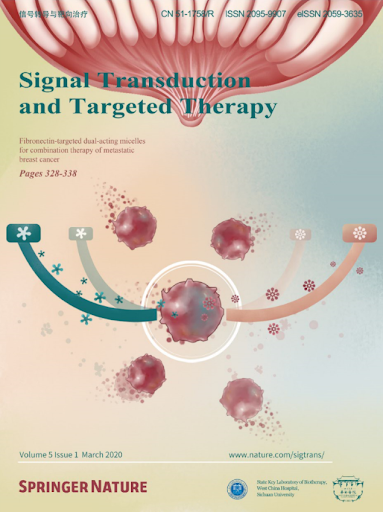High mtDNA content identifies oxidative phosphorylation-driven acute myeloid leukemias and represents a therapeutic vulnerability.
IF 40.8
1区 医学
Q1 BIOCHEMISTRY & MOLECULAR BIOLOGY
引用次数: 0
Abstract
Metabolic reprogramming is a hallmark of cancer, with acute myeloid leukemia (AML) being no exception. Mitochondrial function, particularly its role in protecting tumor cells against chemotherapy, is of significant interest in AML chemoresistance. In this study, we identified mitochondrial DNA content (mtDNAc), measured by quantitative PCR, as a simple and precise marker to stratify the metabolic states of AML patients. We show that patients with high mtDNAc are associated with increased mitochondrial metabolism and a higher dependency on oxidative phosphorylation (OXPHOS), often correlating with chemoresistance. Clinically, patients receiving cytarabine and an anthracycline-based regimen (7 + 3 regimen) experienced inferior relapse-free survival and a higher overall rate of leukemia recurrence. Ex vivo experiments using primary AML samples confirmed cytarabine resistance in high mtDNAc patients, which could be overcome by inhibiting mitochondrial complex I. The FDA-approved drug metformin, which targets mitochondrial metabolism, significantly enhanced apoptosis in response to chemotherapy or targeted agents, such as venetoclax, in AML models. However, metformin-treated cells adapted by increasing glycolysis and NAD+ production, a resistance mechanism that could be bypassed by targeting the nicotinamide phosphoribosyltransferase (NAMPT) enzyme. In summary, we demonstrated that mtDNAc is an effective tool for assessing the metabolic state of AML cells. This method can be easily implemented in clinical practice to identify chemoresistant patients and guide personalized treatment strategies, including novel combination therapies for those with a high reliance on mitochondrial metabolism.高mtDNA含量识别氧化磷酸化驱动的急性髓系白血病,并代表治疗脆弱性。
代谢重编程是癌症的标志,急性髓性白血病(AML)也不例外。线粒体功能,特别是其在保护肿瘤细胞抵抗化疗中的作用,在AML化疗耐药中具有重要意义。在这项研究中,我们确定了线粒体DNA含量(mtDNAc),通过定量PCR测量,作为AML患者代谢状态分层的简单而精确的标记。我们发现mtDNAc高的患者与线粒体代谢增加和对氧化磷酸化(OXPHOS)的更高依赖性相关,通常与化疗耐药相关。临床上,接受阿糖胞苷和蒽环类药物治疗方案(7 + 3方案)的患者无复发生存期较差,总体白血病复发率较高。使用原发AML样本的体外实验证实,高mtDNAc患者可以通过抑制线粒体复合物i来克服阿糖胞苷耐药,fda批准的靶向线粒体代谢的二甲双胍在AML模型中对化疗或靶向药物(如venetoclax)的反应中显著增强细胞凋亡。然而,二甲双胍处理的细胞通过增加糖酵解和NAD+的产生来适应,这是一种可以通过靶向烟酰胺磷酸核糖基转移酶(NAMPT)酶来绕过的耐药机制。总之,我们证明mtDNAc是评估AML细胞代谢状态的有效工具。这种方法可以很容易地在临床实践中实施,以识别化疗耐药患者并指导个性化治疗策略,包括针对那些高度依赖线粒体代谢的患者的新型联合治疗。
本文章由计算机程序翻译,如有差异,请以英文原文为准。
求助全文
约1分钟内获得全文
求助全文
来源期刊

Signal Transduction and Targeted Therapy
Biochemistry, Genetics and Molecular Biology-Genetics
CiteScore
44.50
自引率
1.50%
发文量
384
审稿时长
5 weeks
期刊介绍:
Signal Transduction and Targeted Therapy is an open access journal that focuses on timely publication of cutting-edge discoveries and advancements in basic science and clinical research related to signal transduction and targeted therapy.
Scope: The journal covers research on major human diseases, including, but not limited to:
Cancer,Cardiovascular diseases,Autoimmune diseases,Nervous system diseases.
 求助内容:
求助内容: 应助结果提醒方式:
应助结果提醒方式:


